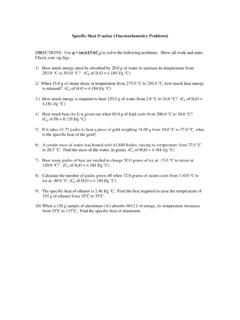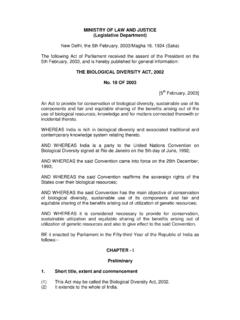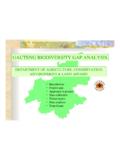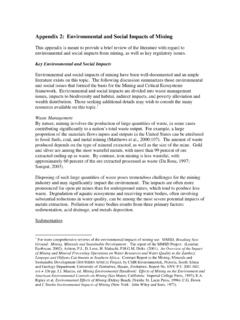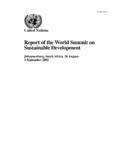Transcription of APES ACTIVITY: BIODIVERSITY - WHY IS IT IMPORTANT?
1 APES activity : BIODIVERSITY - WHY IS IT important ? When a habitat is very diverse with a variety of different species, it is much healthier and more stable. One of the reasons for this is that disease doesn t spread as easily in a diverse community. If one species gets a disease, others of its kind are far enough away (due to the variety of other organisms) that disease is often stopped at the one or two individuals. Simulation #1 1) Each student receives a card marked with D to represent Douglas Firs. 2) Each person is to meet three other people and write their names on the card. 3) All are to remain standing after they write down the names. 4) The teacher symbolizes the disease and will touch one of the students. That person will sit down (because he or she is dead ) and read the names on his/her card. As the names are read, those students sit as well because they have been touched by the disease.
2 5) Ask another one of those sitting (dead) to read the names on their card, and all those students named will sit. Continue until all those sitting have read the names on their cards. 6) Number of students left standing: _____ Simulation #2 1) Each student will receive a card that is marked with a letter that represents a particular species of tree: 2 with D for Douglas Firs, the rest with other letters: N for Noble Fir, C for Western Red Cedar, M for Vine Maples, H for Western Hemlocks, W for White Fir, L for Lodge Pole Pine, WP for Western White Pine, B for Bigleaf Maple, WD for Western Dogwood. 2) Repeat steps 2-6 as for Simulation 1. This time, only those students that are the same variety as the diseased tree that touched them will sit. Different variety trees don't sit (don't die) even if they are touched by a diseased tree. 3) Number of students left standing: _____ FOLLOW-UP QUESTIONS 1) What does biological diversity mean?
3 2) Why didn't all the different trees get the disease? 3) Why didn't the disease spread as fast among the Douglas Firs in Simulation #2 as it did in Simulation #1? 4) In which forest would you need to use more chemicals to control disease: the Douglas Fir forest of the more diversified, old growth forest? Why? 5) Summarize what this simulation symbolized. 6) Which forest would have more diversity of wildlife? Why? 7) If you cut down the variety in a piece of forest you owned and replanted with one type of tree, what will happen to much of the wildlife that was adapted to the forest? (Hint: they cannot just move elsewhere. If other habitats are good, they will probably be near carrying capacity already.) 8) Will this fate happen to all the wildlife? Explain. 9) Many species can only live/reproduce in one type of forest. The spotted owl is an example: it can only live and successfully reproduce in old growth forests (big, old cedars, hemlocks, etc.
4 If these old growth forests are cut down, it s unlikely this owl will survive. Environmentalists call it an indicator species. What does this mean? Why be concerned about one species? 10) Growing one plant, as is the case of growing only Douglas Fir, is called monoculture. Give examples of monocultures a) in your home and b) in agriculture. 11) Why would you need to use more insecticides in monoculture? Is this good or bad? 12) If you wanted to help wildlife, what would you do with regards to the landscaping of your own home?





